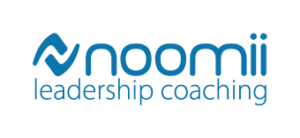The Pros & Cons of Involving Stakeholders When Coaching Toxic Leaders
Toxic leadership is often first detected by the organization through stakeholder temperature surveys which thus kick off an investigation into potential solutions. If stakeholders help detect the problem in the first place, why shouldn’t they be involved throughout the intervention to address dysfunctional behavior?
In this article, we discuss the pros and cons of involving stakeholders when coaching toxic leaders.
Pro #1: Involving Stakeholders Requires Changing Perceptions
Victims of abrasive leaders report that relationship strain can persist even when the leader is on best behavior. Even when the leader is behaving well, the perception is that the leader may be acting insincere in order to manipulate others. Although they may not express their feelings, victims of toxic leaders will view the leader through a lens of cynicism.
What a Toxic Leader Does (Even When on “Best Behavior) Versus How It’s Perceived by Their Victims
| Actions taken by a toxic leader | Perception of victim |
| Buys victim a coffee | What favor is she going to ask of me now? |
| Complements victim | He may have thanked me for completing the report but I bet he’ll give me an earful when he reviews it. |
| Asks victim for input | She asked my opinion but is she really going to do anything about it? I doubt it. |
In our experience, changing behavior takes time (many months) and changing perception takes even more time. Therefore, if the organization is going to invest the time and money to alleviate toxicity in the workplace, it’s in their interest to start changing both behavior of the toxic leader and the perception of the toxic leader by stakeholders at the same time.
Of course, this article addresses both the pros and cons of involving stakeholders so you should proceed with caution.
Also, this article does not explain how to best involve stakeholders when coaching a toxic leader. If you would like to learn more about that, reach out to a Noomii coaching expert to learn more about coaching a toxic leader using a Stakeholder Centered Approach, pioneered by Marshall Goldsmith.
Pro #2: Involving Stakeholders Provides Objective Results
What’s the old philosophical question, if a tree falls in the forest and no one is around to hear it, does it make a sound?
If a toxic leader changes their behavior and no one is around to evaluate it, does the change really matter?
Although we can intuit that soft skills matter, one of the biggest challenges preventing organizations from investing more heavily in leadership development programs, is clearly and objectively demonstrating the return on investment (ROI) for soft skills development.
When it comes to investing in coaching for a toxic leader, it’s not enough to ask the leader if they’ve reformed. Of course they’ll report positive changes.
You don’t want to ask the coach for their opinion either because it’s going to be biased. Unless the coach is engaging stakeholders, their only perspective will be through the toxic leader.
Therefore, making it clear to the leader that their progress will be measured by the stakeholders provides a more objective assessment for the organization.
Pro #3: Involving Stakeholders Gives the Leader Practice
You can’t become an expert at anything by simply talking about it. You need to practice.
For toxic leaders who are trying to become better leaders, they need to practice such skills as how to listen, how to treat others with respect, and how to provide feedback in a constructive and caring way. The time the leader spends with the coach will be used to challenge the leader’s beliefs and assumptions which is a great start. But ultimately, the leader needs to work on their soft skills.
In sports, athletes repeat and perfect skills in practice, a low stakes environment, before using them in a game, a high stakes environment. Involving stakeholders in the coaching process, gives the leader a more controlled environment to practice their skills and collect feedback. To help the leader, the coach can model the behavior, facilitate communication with the stakeholders, give the leader specific behavior tasks, and interpret feedback more objectively.
This doesn’t mean that the coach will do the work for the leader, it just means that the coach can create a safe space for the leader to practice the new skills so that the next time the leader gets into a high stakes game-like situation, they can fall back on the skills they’ve practiced.
Summary of Pros
To summarize, the pros of involving stakeholders are that:
- In addition to changing behaviors of the leader, you change perceptions of the leader
- Stakeholders provide a more objective measure of the improvements in the leader’s soft skills
- The leader can practice their skills under the guidance of the coach
Even with all of the stated benefits above, there are potential challenges involving stakeholders in the coaching of a toxic leader. Let’s take a look at them now.
Con #1: Stakeholders May Fear Retaliation From the Leader or the Organization
Damned if I do. Damned if I don’t.
One of the first steps that a coach may facilitate when coaching a toxic leader is to enrol stakeholders in providing feedback throughout the process. When asked to do that, the stakeholder may feel trapped between two undesirable outcomes. On one hand, they may feel afraid to provide honest feedback to the leader for fear of retaliation from the leader. On the other hand, they may feel that their job is contingent on providing the feedback. In other words, the stakeholder may feel like they don’t have a choice but to accept the challenge.
Therefore, the challenge for the coach is to navigate the dynamics that exist between the leader, the stakeholders, the sponsor, and the organization as a whole.
The challenging dynamics can be dealt with but it requires sufficient time and a substantial commitment from all parties to stick to the process.
Con #2: Involving Stakeholders Is Scary for the Leader
It’s one thing to share a goal with a colleague for additional accountability. It’s even more daunting when the person you share your goal with is going to evaluate your progress.
This can be particularly true for an abrasive leader because they are often high-achieving, results-driven people whose identities are closely linked to their reputation. According to Dr Laura Crawshaw, author of Taming the Abrasive Manager: How to End Unnecessary Roughness in the Workplace, their biggest fear is being perceived as incompetent.
Therefore, when the leader’s organization finally approaches them about their poor conduct, three things usually happen and all of them can be perceived as threats to their competence:
- They are told that they are perceived as abrasive
- The organization wants to help them by providing them specialized coaching
- Stakeholders are going to be involved in the process to assess their progress
Gulp.
The bottom line is that involving stakeholders can be scary for the leader and it is not for the faint of heart. That’s why we’ve written a whole book about how to sell the opportunity of coaching to a toxic leader.
Con #3: Stakeholder Coaching Is a Bigger Investment
As indicated above, successfully involving stakeholders in a coaching engagement for toxic leaders requires a bigger commitment from the organization and the coach. This means more of the good things:
- Changed perceptions
- Objective assessment of behavior change
- Opportunities to practice
But also more of the challenging things for the leader, coach, stakeholders, and the organization:
- Time
- Patience
- Commitment to the process
And of course, because of the bigger investment, the fees for stakeholder coaching are higher than standard coaching.
Final Thoughts on Involving Stakeholders When Coaching a Toxic Leader
The bottom line is that stakeholder based coaching for toxic leaders is hard work. It’s hard work for the coach. It’s hard work for the leader. And it’s hard work for the stakeholders. That’s no reason to not do it. Nobody said being a world-class leader was easy.
If you are part of an organization that is struggling with toxic or abrasive leadership, reach out to Noomii today to explore the right coaching solutions for your unique situation.




Leave a Reply
Want to join the discussion?Feel free to contribute!